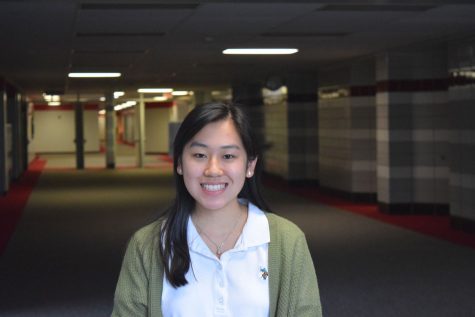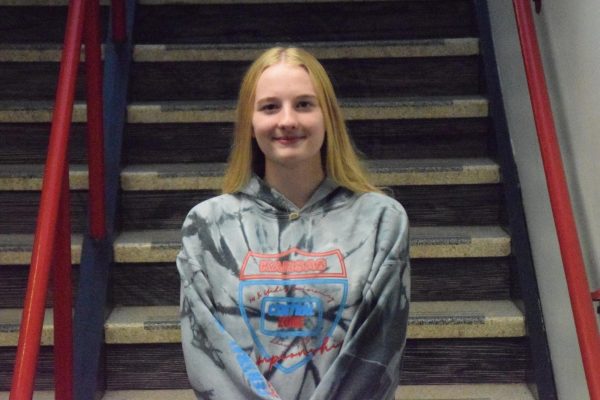Why I marched
February 26, 2018
While waiting for a train at Arlington Park train station, both the weather and the people there were the first things I noticed. Everybody had on either gloves, a hat, or a scarf to protect against the cold. However, there were only a few people that I could guess were going to the women’s march like me and my two friends.
It wasn’t until I boarded the train that it truly felt like my day was starting. That was when the magnitude that my friends and I were going to be marching alongside thousands of other people at Grant Park hit me. At each stop more and more groups of people got on: parents with their kids, teens around my age, and even clusters of all adults. Whether by their signs, their spirit, or just their presence it seemed like our whole train car was filled with people going to the march.
Although once in Chicago everybody on the train would be free to go their own way during the march, there was a sense of community in the moment while we were all heading there. The feeling was awesome and exciting.
“Oh, that’s a good one,” one of the marchers said.
A couple seats behind me and my friends, a group of people were trying to read the sign the woman across from them made. She held it up for them to read. Interested as well, I told my friends who were too far away to see, what she had written. This was the first of many sign readings that my friends and I would both witness and be a part of. Each and every time, people were enthusiastic and supportive of their fellow marchers’ signs.
At the march there were lots of walking, voices in unison, and even festive, upbeat sounds of drums, whistles, and the sirens of megaphones to accompany the movement. Once the masses of people reached Grant Park around 11 am there was a standstill as a rally with guest speakers began. We waiting for over an hour with most of us straining to hear what was being said. However, my friends and I could tell that everyone was all for the march and were therefore happily waiting for it to start.
“It was very empowering, everyone was so kind and sincere” Emma Raby, a junior at PHS, said.
The signs people made tackled everything from immigration, racism, greater support for all women, and in general women’s role in resistance towards the issues present today. It was a breathtakingly beautiful sight to see.
It felt amazing to march under the “L”, and take on streets that were brightly exposed to broad daylight, to side ones where buildings blocked most of the sunlight. We advanced on intersection crosswalks, sidewalks, and closed roads. With each new area we took over, there was a greater sense of purpose. Meanwhile chants such as “Sí, sí puede” swept through the crowd now and then to give way to cheers.
Seeing all these people of all genders, sexualities, and ethnicities being strong by standing up for what they believe in warmed my heart.
I marched because there are issues today that are not right. There are double standards and treatment of women that should not be acceptable.
I marched since feminism means equality for all. Feminists have a bad, undeserved reputation. When feminists are mentioned, a negative association gets implied and people who hate men are automatically the first thoughts. However, this is incorrect. That is not what feminists are about. Also, feminists do not hate men, those people are misandrists.
I marched because girls are made fun of when they like things society thinks they should and they get made fun of when they don’t. But at the march, Chicago’s second one among many worldwide sparked by the one on Washington last year, people accepted and embraced all the things that women can do or like.
I marched because even though women, or a group of people are gaining more rights, that doesn’t mean that’s enough. That is no reason to lay off, especially when these rights may not be in many countries and more rights are still to come.








